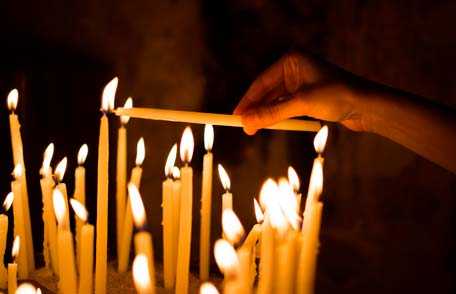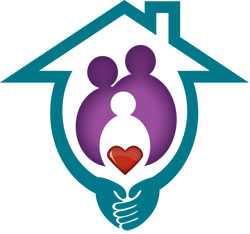National Homeless Person's Memorial Day
 This day serves to raise awareness of those who don’t have a place to call home, and to remember those who have died as a result of being homeless. Since 1990, our country has observed National Homeless Persons’ Memorial Day.
This day serves to raise awareness of those who don’t have a place to call home, and to remember those who have died as a result of being homeless. Since 1990, our country has observed National Homeless Persons’ Memorial Day.
The benefits of stable and safe housing on health are without question. Poverty, which affects over 43 million Americans, and unaffordable housing, increases the risk homelessness and poor health outcomes. Annually, the Homeless Persons’ Memorial Day (HPMD) is observed on or about the 21th day of December. The observance serves as a reminder that in a country of wealth, there are people whose life expectancy is shortened due to what preceded and occurred while they were homeless. The HPMD events are held across the country, and they raise awareness of the profound impact of homelessness on the people living without stable shelter, as well as on those who can help, and the communities within which we all co-exist.
The 2015 Point-in-Time (PIT) survey [4.65 MB] from the U.S. Department of Housing and Urban Development, identified 564,708 people as homeless in the United States, on a given night, in January 2015. Although 69 percent were recorded in shelters or residential programs, 31 percent were found in unsheltered locations. Two-thirds (64 percent) were single individuals, the remaining third (36 percent) were families with children. Twenty-three percent of those homeless were children younger than 18 years of age; 6.5 percent of the over half million people were unaccompanied youth under 18 years of age.

Homelessness can have a severe impact on people’s health and lives.
Compared to the general population, people who are homeless are at greater risk of infectious and chronic illness, poor mental health, and substance abuse. They are also more often victims of violence, prior to and once homelessness. Homeless persons also have a mortality rate four to nine times higher than those who are not homeless.
Addressing the public health needs of this population requires the collaborative and integrated efforts of health care providers, community organizations, and social service agencies. Collective efforts of individuals, organizational, as well as public-private partnerships have contributed to declines in homelessness, increases in rapid re-housing, and successful Housing First initiatives.
CDC, as the nation’s health protection agency, contributes by providing accurate health information that is accessible to anyone. CDC is also working with other federal agencies and non-federal organizations on cross-sector partnership discussions on how to improve health and housing outcomes.
As December 21 approaches, let it remind us of the lives lost to poverty and lack of shelter, and consider how to make a difference. One way is to participate in the upcoming 2017 Point-In-Time (PIT) Count as a volunteer in January 2017. The biennial PIT count is an important HUD endeavor coordinated with local HUD funded continuum of care (CoC) programs. The national effort entails the CoCs counting the homeless people who are staying in shelters, as well as coordinating volunteers to find and count the homeless people who are unsheltered.
To learn more about this national concern, please check out the links below.
References
- U.S. Department of Housing and Urban Development. The 2015 Annual Homeless Assessment Report (AHAR) to Congress: Point-in-Time estimates of homelessness [4.0MB]. Accessed December 2, 2016.
- U.S. Interagency Council on Homelessness. Opening Doors: Federal Strategic Plan to Prevent and End Homelessness: As Amended in 2015 [2.4 MB]. Accessed December 2, 2016.
- Morrison DS. Homelessness as an independent risk factor for mortality: results from a retrospective cohort study. Inter J of Epidemiology.2009; 38: 877–883.
More Information
More Information
- National Coalition for the Homeless, National Homeless Persons’ Memorial Day
- National Health Care for the Homeless Council
- National Health Care for the Homeless Council, Homeless Persons’ Memorial Day
- National Center on Family Homelessness
Federal Resources on Homelessness
- U.S. Interagency Council on Homelessness
- Federal Strategic Plan to Prevent and End Homelessness, Update 2015[2.4 MB]
- U.S. Department of Veterans Affairs: Homeless Veterans
- SAMHSA Homelessness Resources Center
- U.S. Department of Housing and Urban Development (HUD) Homelessness Assistance
- HUD Local Homelessness Assistance By State
- U.S. Department of Health and Human Services: Homelessness
- Income and Poverty in the United States: 2015
CDC Web Resources
- Social Determinants of Health
- Persons Who Use Drugs
- HIV/AIDS
- STDS
- Viral Hepatitis
- Tuberculosis
- Homelessness is a risk factor for TB
- Violence Prevention
- Intimate Partner Violence: Consequences
CDC Video and Audio Podcasts on Homelessness
- Page last reviewed: December 16, 2016
- Page last updated: December 16, 2016
- Content source:
- National Center for HIV/AIDS, Viral Hepatitis, STD, and TB Prevention
- Page maintained by: Office of the Associate Director for Communication, Digital Media Branch, Division of Public Affairs




 ShareCompartir
ShareCompartir